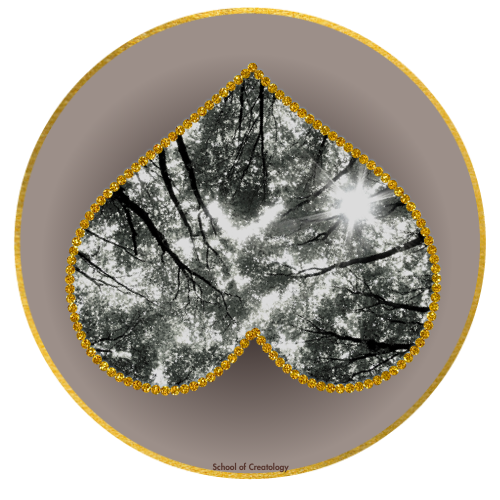
What happens when our creativity is individually and collectively oppressed, repressed, depressed…
suppressed?
Our worsening problems in our personal, social, and ecological lives are evidence
our global creativity is suppressed.
Most of us lose our spark as we age, so we tend to believe this is a normal part of life, and accept this belief because our society has taught us our creativity isn’t THAT important.
The light within us that comes out while we are being creative,
that we feel ignite
and is seen SHiNiNG through when we are in our element,
fades into being a ‘sometimes’ thing,
and over time, with self-consciousness, with self-doubt,
dims, and for many, eventually goes out.
But losing our creative energy has natural consequences.
Read the table below.

Unless we value creativity more highly,
our creative capacities,
and our children’s creative capacities,
and their children’s creative capacities
… our children’s ability to transform conditions…
will remain under-developed,
which is really, really bad timing
given the state of our social and ecological conditions.
Jane Macdonald
So, how did we get into this mess?
The bulk of us are raised in a society and its families and schools… cultures…
that continue to give creativity a low value.
For example, our:
- schools still don’t teach creativity itself, for students to learn about it as a subject in its own right
- schools only occasionally teach via creativity’s process, for students to increase their creative capabilities
- schools rarely teach the creative process itself, for students to become conscious of it
- schools rarely uphold values of co-creative cultures, for students to develop skills in co-creating
and, therefore,
- schools have been found to substantially reduce our creativity.
As a result, our society’s creative peak is at the age of 6. Most of our educators have less creative capacities than the children they teach.
So, how can it possibly be that we,
as parents and teachers and brothers and aunties and bosses, and ‘leaders’
can hand down adequate creative knowledge and skills
to our younger generations who will increasingly need it more than we do?
“We routinely witness creativity in young children,
but it is hard to find in older children and adults
because their creative potential has been suppressed
by a society that encourages intellectual conformity.
We begin to suppress children’s natural creativity
when we expect them to color within the lines in their coloring books.”
Robert J. Sternberg & Wendy M. Williams
(1996)
When our creativity is suppressed…
- increasing personal, social, and ecological oppression, repression and depression
- reducing ability to identify problems, generate ideas, experiment, and problem solve
- unsolved and worsening personal, local and global problems, eg, poverty, extinctions, climate change
- reducing ability to effect positive change
- greater destruction; devolution
- reducing giving and reciprocity… increasing taking
- reducing ability to create (sustainable) resources
- reducing wellbeing
- increasing dependence
- increasing abuse, imposition, and taking
- reducing teamwork and collaboration
- increasing survival instincts
- increasing sense of entrapment
- increasing self-doubt and procrastination
- livelihoods and activities less aligned with self and co
- reducing sense of authenticity and trust
- reducing mental health
- assuming less responsibility; decreasing ability to respond
- reducing sense of community
- less sharing of resources, fewer resources available while using more resources
… the scales of justice, unbalanced.
Myths and fibs about Creativity that add to its suppression, include:
- Creativity is enigmatic; it’s too hard to put our finger on
- Creativity has no theory, philosophy, or theology
- Creativity can’t be taught, or learned
- If we do learn about Creativity, it will take all the mystery out of it
- Learning about Creativity and learning by being creative takes too many resources such as time, money, people, materials
- Academic processes are human’s natural way to learn; the creative process is not
- Classrooms of children learning via the creative process will be chaotic
- Creativity is only about art
- Any domain worthwhile, eg science, engineering, and maths, was born of academia
- A creative life is a charmed life (not hard work)
- A creative person needs an extremely strong talent to succeed as an artist… interests, passions, callings don’t count
- Only some people are born creative
- Creativity is too risky
- There is no power beyond the human mind
- Creativity is only thinking, such as divergent thinking, lateral thinking, and critical thinking
- Creativity itself isn’t enough to solve problems
- There is no way we can solve all our problems
- The world can’t or won’t change
- Grassroots people have no power to create change… that’s up to our governments
- The unknown is too scary
- Society can’t consist of people freely (creatively) thinking… imagine the consequences!
Reference:
Sternberg, Robert J., and Williams, Wendy M. (1996) ‘How to Develop Student Creativity’. Association for Supervision and Curriculum Development, Virginia, U.S.A, p.2.

